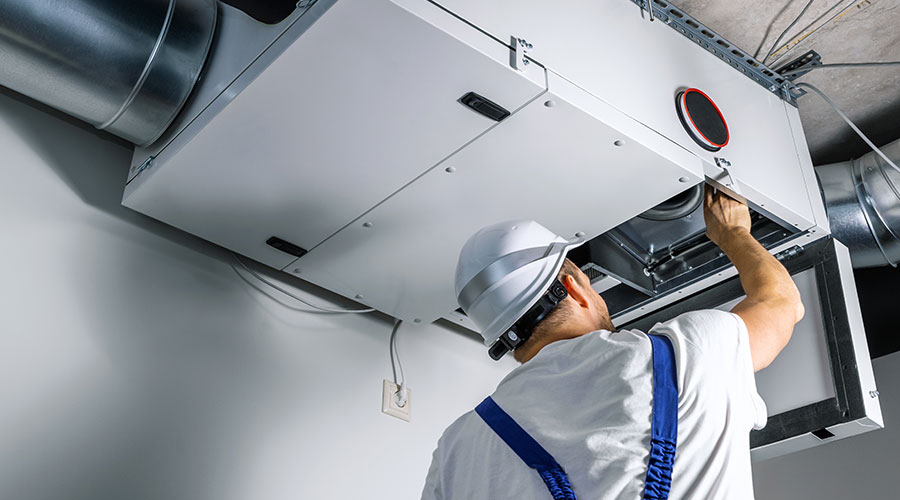Every day, we are exposed to thousands of chemicals, in our food, water, the air we breathe, the clothing we wear, the furniture we use and the carpet we walk on. Mounting data suggests that some of the chemicals we come in contact with — in our homes, workplaces, schools and stores — contain toxicants that can have adverse affects on human health and the environment.
Hospitals and healthcare facilities are no exception. In recent years, we’ve learned that certain materials and products we use, including furniture, fabrics, building materials and cleaning supplies, can have negative impacts on patients, staff and our communities—impacts that run counter to healthcare’s healing mission
Growing concern for human health
Research and new findings have led healthcare facilities to become increasingly concerned with certain chemicals that may be linked to conditions like cancer, infertility, birth defects, obesity, asthma and diabetes. Because of these links, many hospitals and healthcare facilities are taking steps to reduce exposure to these chemicals of concern.
For more than 15 years, Practice Greenhealth has guided thousands of hospitals and healthcare facilities to create environments that foster healing and healthy workplaces. With the help of our partner organization, Health Care Without Harm, we’ve seen significant progress in the market for materials and products that promote healthy interiors across the healthcare industry.
Safer products
The healthcare sector has zeroed in on safer products as an important step towards creating healthier healing environments. In fact, the 2013 Milestone Report released by the Healthier Hospitals Initiative and Practice Greenhealth, shows that healthcare facilities are spending more on products considered to be safer and healthier for all patients, staff, and visitors who walk through the doors.
The last six months have been momentous in our quest for safer products as leading U.S. health systems have taken bold steps to phase out the use of toxic, flame-retardant chemicals in furniture.
We used to think that flame-retardant chemicals used in beds, couches, chairs, and other furniture made facilities safer in the event of a fire. We have since learned that these harmful chemicals can escape from products, making their way into our bodies and the environment. Flame-retardants have been linked to reproductive problems, developmental delays and cancer, among other health issues. At the same time, the growing use of automatic sprinkler systems along with bans on indoor smoking have greatly alleviated concerns about fires in hospital facilities. Fire safety can be assured without hazardous chemicals.
Early in 2014, the State of California overhauled its 39-year-old flammability rule, allowing furniture manufacturers to meet safety standards without adding hazardous flame-retardant chemicals to foam or fabric used in furniture.
Following the California decision, Kaiser Permanente announced that it would no longer purchase any furniture treated with toxic flame retardants. In September, Advocate Health Care, Beaumont Health System, Hackensack University Medical Center, and University Hospitals Health System followed suit, announcing that they too would transition away from toxic chemicals commonly found in furniture. The five health systems spend roughly $80 million a year to furnish hospitals, medical offices and other buildings with chairs, benches, sofas and other furniture.
We expect the decisions of these leading healthcare systems and the other systems participating in the HHI Safer Chemicals Challenge will prove to be a game changer for the healthcare industry and the healthcare furniture suppliers across the country.
Healthier cleaning
Hospitals and healthcare facilities must follow strict protocols to prevent infection and maintain the health and safety of both patients and staff. Operating rooms in particular require deep cleaning after each use to render the space sterile.
While traditional cleaning products have done a good job at helping us maintain a cleaner, more sterile healing environment, some of these cleaning products also contain chemicals known to cause health problems for patients, the environment and healthcare professionals alike.
Data clearly show that the healthcare sector has a higher incidence of work-related asthma, with cleaning products and poor indoor air quality identified as the top leading causes. healthcare workers who routinely clean facilities and equipment, such as endoscopes, are exposed to these chemicals with greater frequency and may face harmful additional risks.
The good news: today’s hospitals and healthcare facilities have increased access to healthier cleaning alternatives to keep spaces sterile while reducing health impacts.
Many green cleaning products on the market have been evaluated for performance, in addition to their safety. Practice Greenhealth recommends using cleaning products that are “certified” as being environmentally preferable, which means that a third party—such as Green Seal or EcoLogo—has reviewed scientific claims and environmental exposure information to verify that the product meets the right criteria.
In addition, a growing number of hospitals and healthcare facilities are turning to new, effective and innovative cleaning technologies like ultraviolet light, which has been shown in studies to be highly effective at killing germs and bacteria. We expect innovations like the use of UV disinfection to become more common in healthcare settings because they protect the health of patients, staff, maintain strict standards of cleanliness and reduce environmental impact.
Better indoor air
According to the EPA, indoor air pollutants have been ranked among the top five environmental risks to public health. In addition, poor indoor air can trigger a variety of symptoms and illnesses. It’s imperative that hospitals and healthcare facilities have good indoor air quality to provide the healthiest and safest environment for those who need it the most: children, pregnant women, the elderly, those with chronic illnesses and healthcare professionals on the job.
While safer products and healthier cleaning practices lead to better indoor air, additional measures must be taken to ensure patients and healthcare professionals are breathing healthy air.
Hospitals and healthcare facilities can improve indoor air quality by controlling moisture, mitigating radon and preventing mold growth. Inadequate ventilation, high temperatures, and high humidity levels can also increase the concentration of indoor air pollutants. Proper ventilation and maintenance are an important first step.
In addition, hospitals and healthcare facilities performing energy efficiency upgrades are surprised to learn how these upgrades often address and mitigate poor indoor air quality. Not only are these facilities reducing energy use, they’re creating healthier indoor air and safer healing environments.
You can create healthier healing spaces too
Many hospitals, healthcare facilities, and non-profit organizations like Practice Greenhealth and healthcare Without Harm are working together to refine and share best practices to achieve significant environmental changes in healthcare settings.
You too can be part of the solution, creating environments that protect healthcare professionals while fostering patient healing.
There are many ways Practice Greenhealth can help: by offering tools that help you identify products free of chemical hazards to providing one-on-one guidance and customized strategies designed to meet your unique goals.
To learn more about Practice Greenhealth, visit us online at www.practicegreenhealth.org.
Jeffrey Brown is the executive director of Practice Greenhealth.

 Deferred Maintenance: 5 Critical Issues
Deferred Maintenance: 5 Critical Issues AdventHealth Parker Breaks Ground on $300 Million Expansion Project
AdventHealth Parker Breaks Ground on $300 Million Expansion Project HHS Proposes Changes to HIPAA Security Rule to Enhance Cybersecurity
HHS Proposes Changes to HIPAA Security Rule to Enhance Cybersecurity Navigating the Healthcare Real Estate Landscape in 2025
Navigating the Healthcare Real Estate Landscape in 2025 UI Health Care Acquires 20 Mission Cancer + Blood Clinics in Iowa
UI Health Care Acquires 20 Mission Cancer + Blood Clinics in Iowa